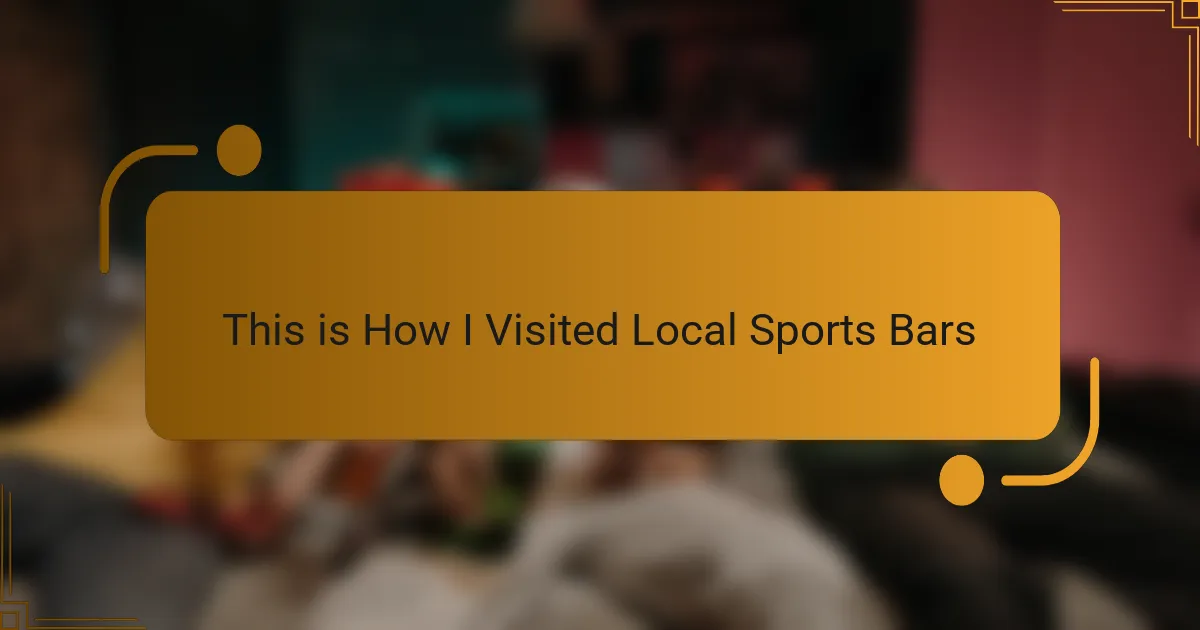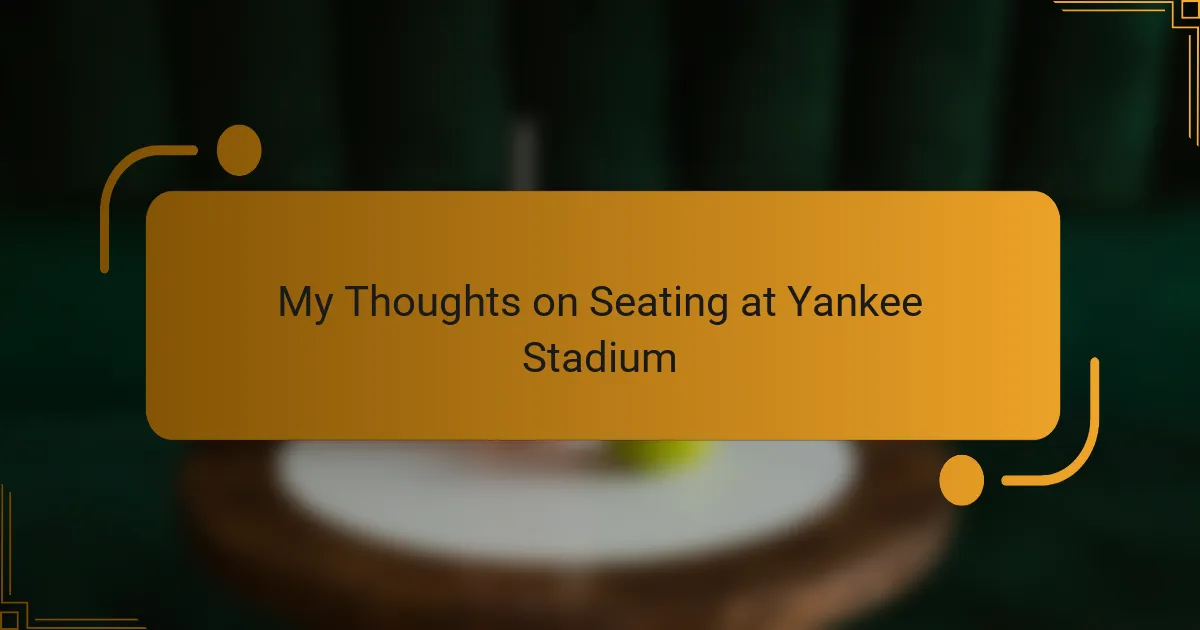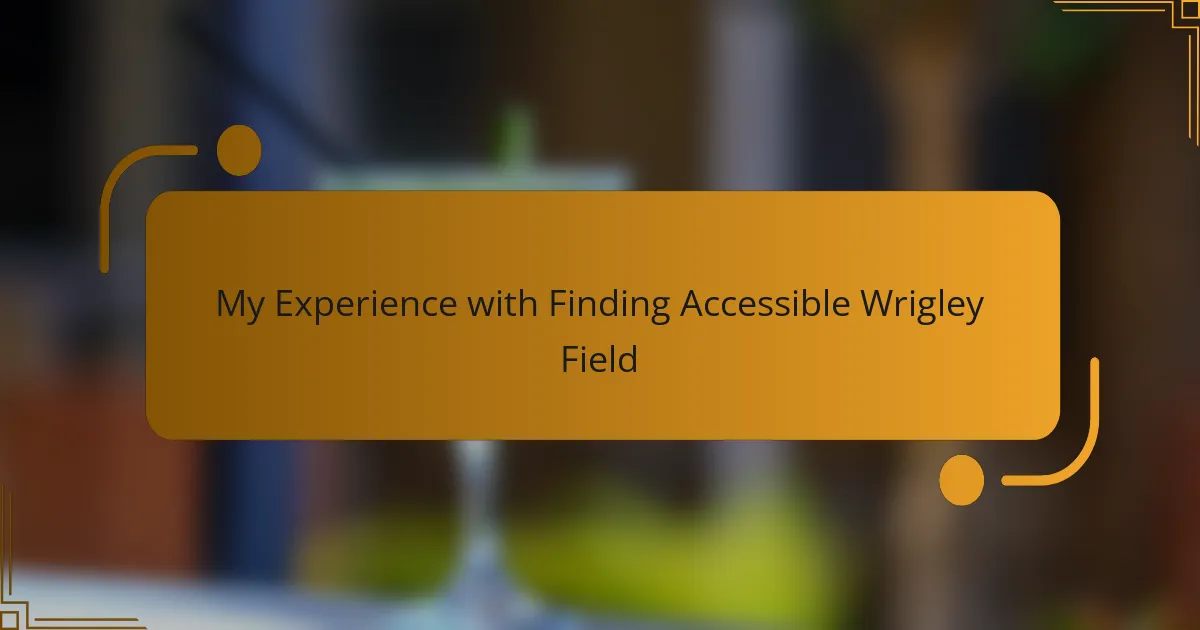Key takeaways
- Accessibility in sports bars involves more than just physical features; it encompasses atmosphere, seating arrangements, and sensory considerations to ensure all guests feel included.
- Key factors to evaluate include the ease of navigation, appropriate seating options, and sensory elements like lighting and noise levels.
- Planning visits during off-peak hours and calling ahead for accommodations can enhance the accessibility experience and reduce potential stress.
- Personal experiences highlight the importance of thoughtful design in creating welcoming environments for all, emphasizing clear pathways and considerate noise levels.
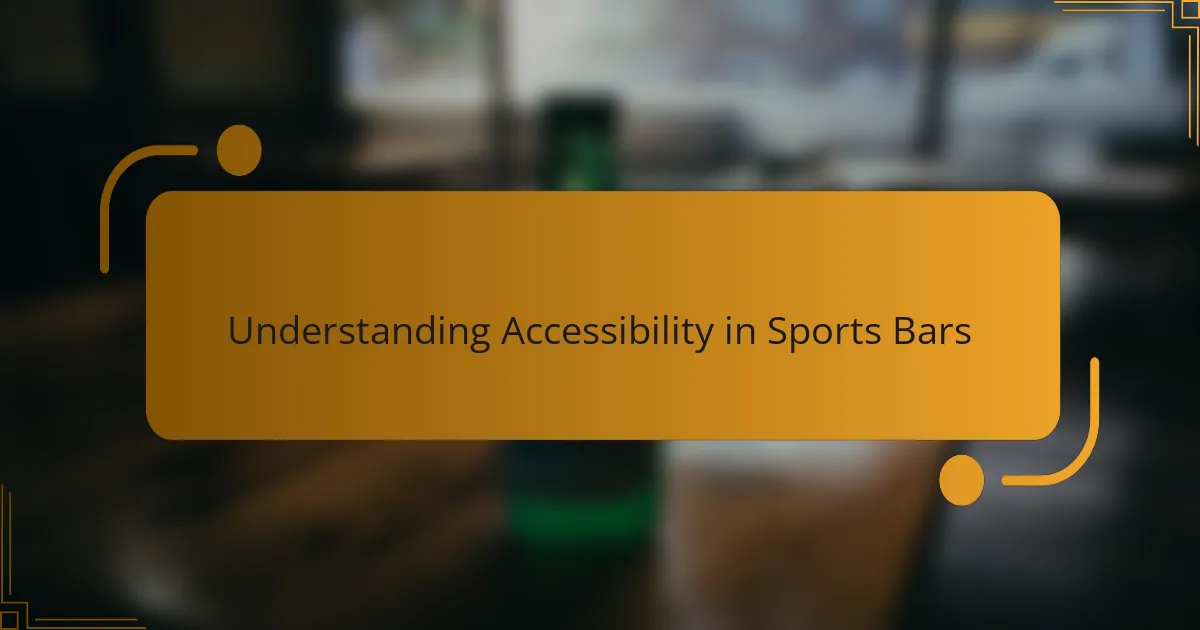
Understanding Accessibility in Sports Bars
When I think about accessibility in sports bars, I realize it goes far beyond just having a ramp at the entrance. It’s about creating an environment where everyone feels welcome and can enjoy the game without obstacles. Have you ever watched a match but felt like the space wasn’t designed with you in mind? That feeling sticks with me, and it’s why I pay close attention to these details.
I remember walking into a bar where the seating arrangement made it nearly impossible for someone in a wheelchair to find a comfortable spot. It was frustrating, not just for that person but for everyone who wanted an inclusive, fun atmosphere. Accessibility means thinking about sightlines, table heights, and even floor surfaces, all things that might seem small but hugely impact the experience.
So, when evaluating a sports bar like Dave & Busters, I ask myself: Does this place invite everyone to cheer on their team equally? Considering accessibility isn’t just a legal checkbox; it speaks to the heart of hospitality and respect for all customers. That’s the kind of atmosphere I want to highlight in my reviews.
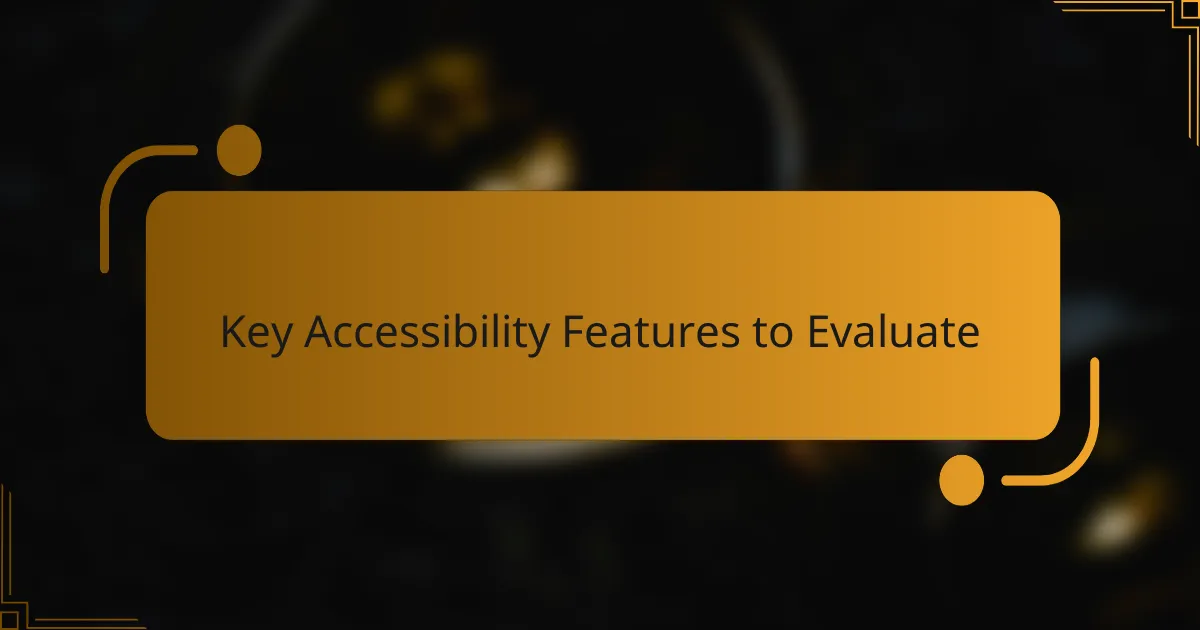
Key Accessibility Features to Evaluate
One of the first things I look for is how easy it is to get from the entrance to key areas like the bar, seating, and restrooms. I recall visiting places where narrow pathways or cluttered spaces made navigation a real challenge. It made me wonder—if just getting around feels like a maze, how welcoming can the venue really be?
I also pay close attention to the seating options available. Are there tables that accommodate wheelchairs without making those seated feel isolated? I’ve noticed that small details, like adjustable tables or clear space under countertops, can make a huge difference in creating a comfortable and inclusive environment. It’s about more than access; it’s about belonging.
Finally, I consider sensory aspects, such as lighting and noise levels. Sometimes, overly bright lights or booming sound systems can overwhelm guests with sensory sensitivities. I ask myself, does this space allow people with different needs to enjoy the atmosphere without feeling excluded? These elements, though often overlooked, shape the entire experience for many visitors.

Planning Your Visit to Dave & Buster’s
Planning your visit to Dave & Buster’s means thinking ahead about when to go and what to expect from the layout. I found that visiting during less crowded hours not only made it easier to move around but also gave me a better chance to really observe how accessible everything was. Have you ever shown up at a busy bar and felt stuck because there simply wasn’t enough room to navigate comfortably? That’s exactly what I wanted to avoid.
I also checked out the parking situation—it might seem like a small detail, but having accessible parking spots close to the entrance can set the tone for the whole experience. On one visit, finding a convenient spot made me realize how much these thoughtful touches contribute to making a place truly welcoming from the moment you arrive. It’s the kind of thing that lets you focus on having fun rather than worrying about the logistics.
Finally, I made sure to look into the reservation policies and any accommodations Dave & Buster’s offers ahead of time. Knowing whether they can help with special seating requests or have staff trained in accessibility made me feel more confident about the visit. Have you ever called ahead just to check if your needs will be met? Trust me, a little planning like this can make a big difference in turning a simple night out into a smooth, enjoyable experience.
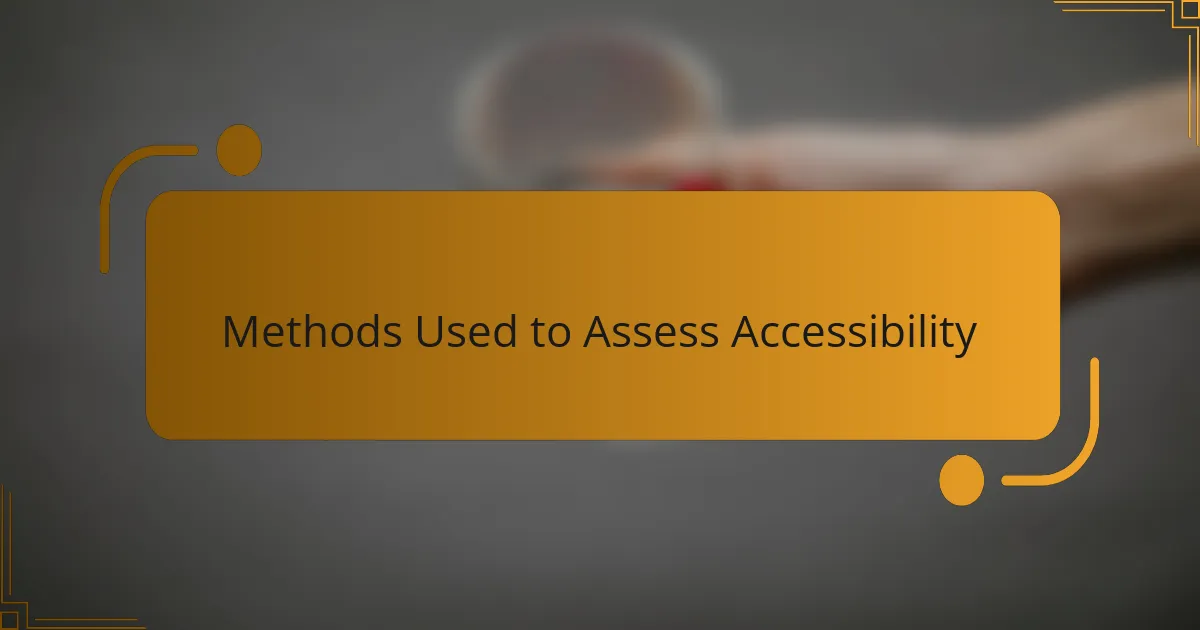
Methods Used to Assess Accessibility
To get a real sense of accessibility at Dave & Buster’s, I started by physically navigating the space myself. Moving from the entrance through the seating area to key spots like the restrooms allowed me to experience firsthand any tight corners or potential barriers. Have you ever tried squeezing through a crowded aisle with a stroller or wheelchair? That feeling told me a lot about how thoughtfully the layout was designed.
I also tested out the seating options by sitting at different tables and checking the height and legroom, imagining what it would be like for someone using a wheelchair. Noticing how easily I could slide under a table or whether the view of the big screens felt blocked was more revealing than any checklist. It made me wonder—are these small design choices making everyone feel included?
Finally, I relied on my ears and eyes to assess sensory accessibility. I paused to gauge the noise levels during peak hours and how the lighting affected visibility. Could someone with sensory sensitivities actually enjoy the atmosphere without feeling overwhelmed? Asking these questions made me realize that accessibility involves so much more than ramps and signs. It’s about creating a welcoming vibe for every single guest.
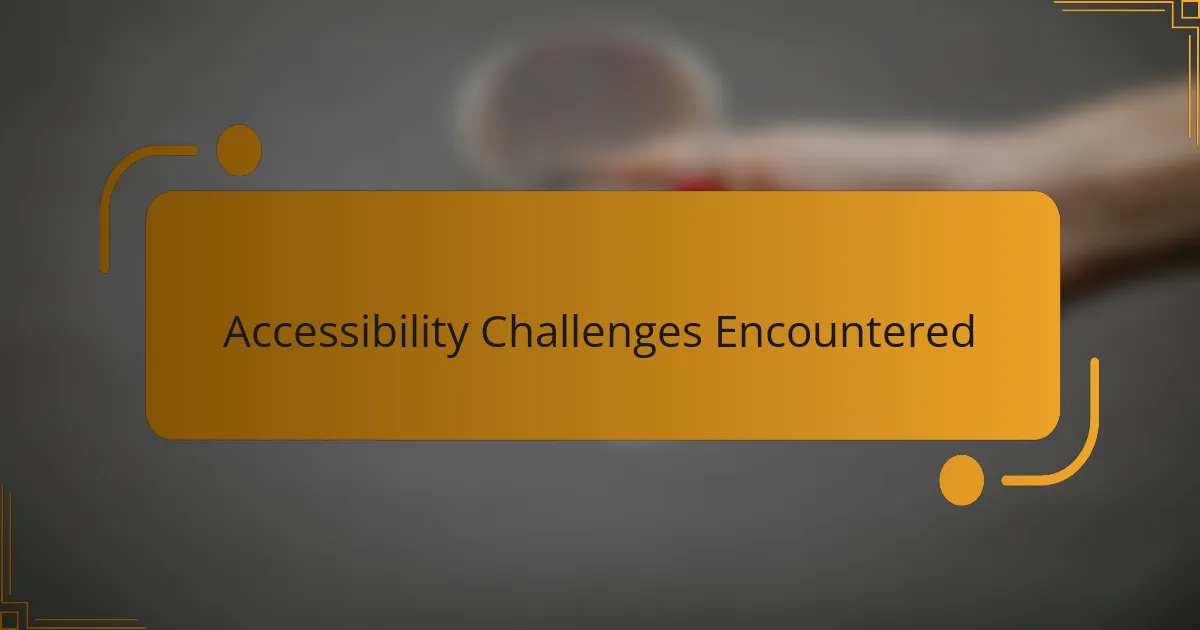
Accessibility Challenges Encountered
Navigating through Dave & Buster’s, I quickly noticed some tight spots that made me wonder how someone with mobility aids would fare. There were narrow corridors and clustered seating areas that felt cramped, and I couldn’t help but think—would this slow anyone down or make them feel frustrated before the fun even starts? It’s those moments that reveal much about the real challenges guests might encounter.
Another thing that caught my eye was the height of certain tables and the spacing underneath them. I tried picturing a wheelchair user attempting to pull up comfortably but realized several tables were just a bit too high or blocked by fixed seating. It’s a subtle barrier that might not be obvious at first but can really impact whether someone feels included or sidelined.
Sound levels were also tricky at times. The excitement of the games and music created a lively atmosphere, but I wondered how guests with sensory sensitivities handled the sometimes overwhelming noise. Could they find a quiet corner, or would the sensory overload dampen their experience? These less visible challenges often go unnoticed, yet they’re crucial for genuine accessibility.
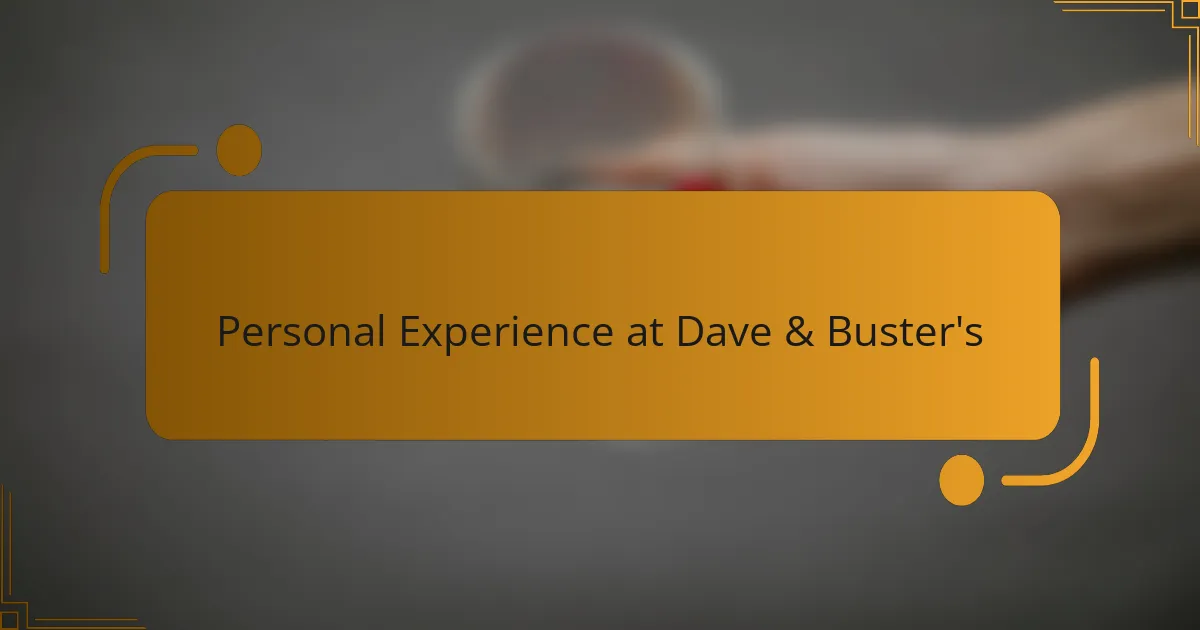
Personal Experience at Dave & Buster’s
Walking into Dave & Buster’s, I immediately noticed the wide aisles that made moving around feel surprisingly easy, even during a busy weekend night. It’s funny how something as simple as clear pathways can make such a difference—I could see how someone using a wheelchair wouldn’t feel boxed in or frustrated right from the start. Have you ever been somewhere that just instantly felt accessible? That’s the kind of first impression that sticks with me.
As I settled into a booth near the gaming area, I paid close attention to the table height and available legroom. I found myself imagining how a friend in a wheelchair might fit in and happily noticed that there was enough space to pull up comfortably without feeling out of place. Moments like these really highlight how thoughtful design can create a sense of inclusion without making it obvious or awkward.
One thing that caught me off guard, though, was the noise level during peak hours—it was electrifying, but also pretty intense. I wondered how someone with sensory sensitivities might manage amid the cheers and loud music. It made me appreciate when venues offer quieter nooks or adjustable sound options, even if those aren’t always easy to spot on a quick visit. Have you ever felt overwhelmed by the atmosphere in a place that’s supposed to be fun? I certainly did, and it reminded me how important these quieter moments are for accessibility.
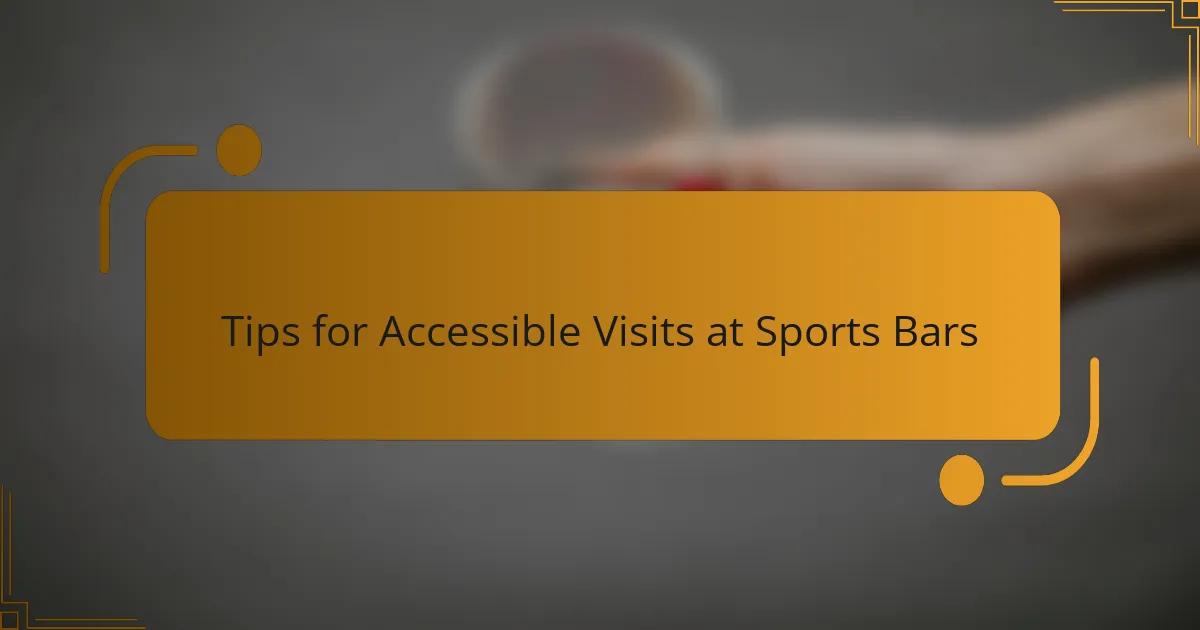
Tips for Accessible Visits at Sports Bars
One tip I always keep in mind is to arrive during off-peak hours. It might sound like a no-brainer, but fewer crowds mean easier navigation and less stress. Have you ever felt stuck in a sea of people, struggling to find space? That’s exactly what I wanted to avoid, and the calmer vibe made the whole experience more enjoyable.
Another thing I’ve found helpful is calling ahead to ask about accommodations. It’s not just about reserving a spot; sometimes staff can prepare for special seating or guide you to quieter areas. Don’t underestimate the power of a quick conversation—knowing someone’s ready to help before you arrive gave me real peace of mind.
Lastly, I make a mental note of the layout on arrival—checking how wide the pathways are and where key spots like restrooms and accessible seating are located. It’s like mapping out my own game plan for the night. When you do this, you can focus more on enjoying the game and less on worrying about obstacles. Have you tried this little strategy? It really changed how comfortable I felt during my visit.
